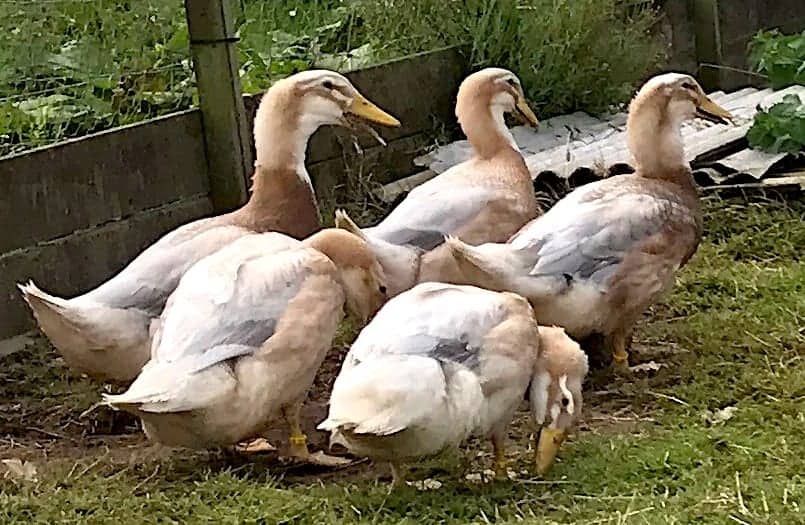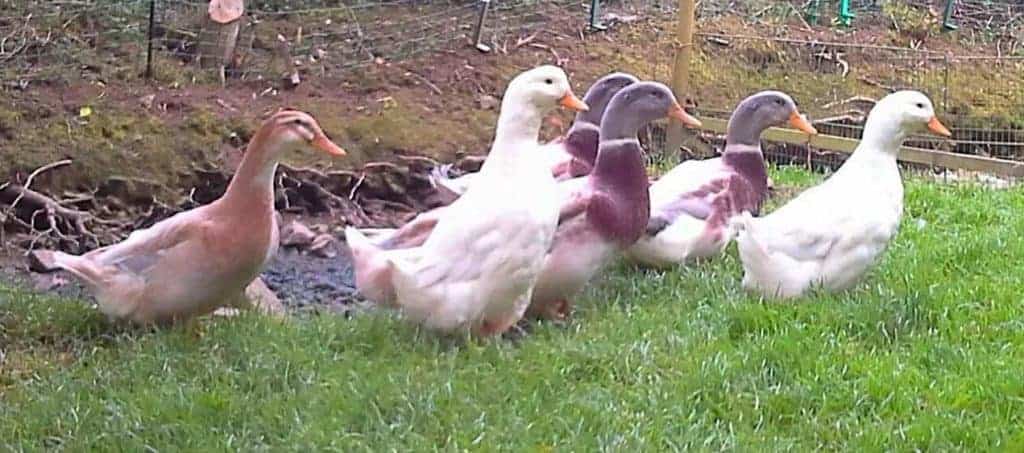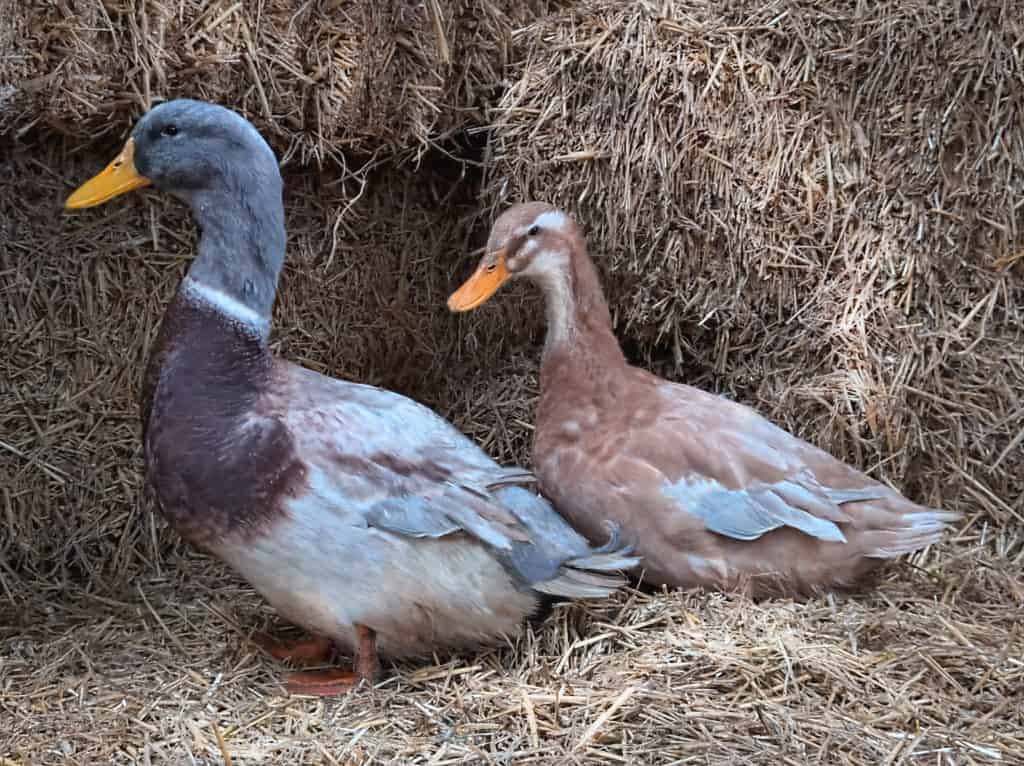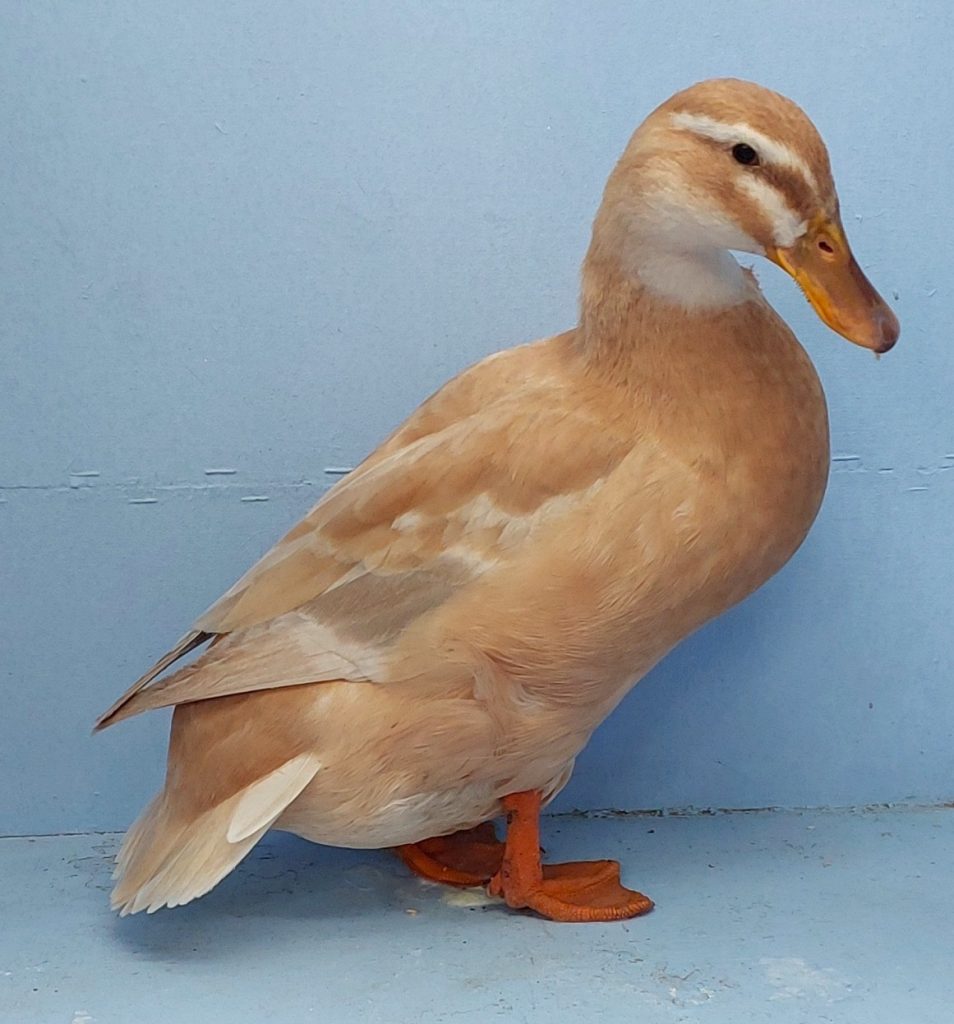Saxony

The genotype of the Saxony is wild-colour, light phase (li/li) plus double blue dilution (Bl/Bl).
The same colour pattern is reproduced in ducks of other types, or shapes, if they have the same genotype. This is seen in the Apricot Trout (or Blau-Gelb) Runner. There is also an Apricot Trout (Saxony) coloured version of the Call Duck in existence. But as yet, it is in such small numbers that it isn’t recognised as a Standard colour in the UK.

Heavy duck breed
Domesticated Mallard Anas platyrhynchos
The striking Saxony was developed in Germany, mainly from Rouens, German Pekins and the Blue Pommerns. It was first exhibited in 1934. However, the breeding stock was nearly all destroyed during the Second World War.
The original breeder, Albert Franz, was able to revive the breed from the few surviving birds and some examples of the parent breeds.


Saxony Ducks are straightforward to rear, the ducks can lay between 80 and 100 eggs each year.
In Australia, there is a bantam version of the Saxony. Although it is considerably smaller than its heavy cousin, it shares the same colour genetics. The small size makes it more popular on the Australian show circuit than the full-size Saxony, as it does not need quite so much space.

Share this page